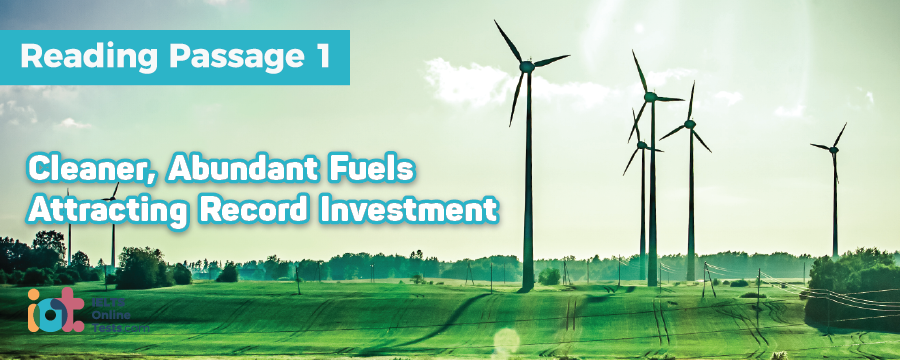
IELTS Mock Test 2022 June
- Đăng ngày: 28 Jun 2022
- Tests taken: 618,097
Đáp án
Part 1: Question 1 - 13
- 1 C
- 2 G
- 3 A
- 4 I
- 5 agricultural waste
- 6 targets
- 7 coal
- 8 a vast market
- 9 NOT GIVEN
- 10 NOT GIVEN
- 11 NOT GIVEN
- 12 FALSE
- 13 NOT GIVEN
- 1 C
- 2 G
- 3 A
- 4 I
- 5 agricultural waste
- 6 targets
- 7 coal
- 8 a vast market
- 9 NOT GIVEN
- 10 NOT GIVEN
- 11 NOT GIVEN
- 12 FALSE
- 13 NOT GIVEN
Part 2: Question 14 - 26
- 14 D
- 15 H
- 16 E
- 17 B
- 18 22 B,C,F,G,H
- 23 B
- 24 C
- 25 B
- 26 B
- 14 D
- 15 H
- 16 E
- 17 B
- 18 22 B,C,F,G,H
- 23 B
- 24 C
- 25 B
- 26 B
Part 3: Question 27 - 40
- 27 A
- 28 B
- 29 C
- 30 A
- 31 legal problems
- 32 market for e-books
- 33 retailers and publishers
- 34 book world
- 35 manga comic books
- 36 FALSE
- 37 TRUE
- 38 FALSE
- 39 FALSE
- 40 TRUE
- 27 A
- 28 B
- 29 C
- 30 A
- 31 legal problems
- 32 market for e-books
- 33 retailers and publishers
- 34 book world
- 35 manga comic books
- 36 FALSE
- 37 TRUE
- 38 FALSE
- 39 FALSE
- 40 TRUE
Giải thích chi tiết
Questions 1-4
The text has 9 paragraphs (A – I). Which paragraph contains each of the following pieces of information?
1 Cases where the use of renewable fuels is in competition with non-renewable ones
2 The membership of REN21
3 The rates at which the use of renewable fuels is growing faster than the use of nonrenewable ones in the world
4 The sources of funding for renewable fuels in developing countries
- 1 Answer: C
Q1: Cases where the use of renewable fuels is in competition with non-renewable ones
Martinot and 100-plus researchers in more than 20 countries assessed several renewable technologies: small hydro (meaning small dams), modem biomass (agricultural waste, for example), wind, solar, geothermal, and biofuels such as ethanol and biodiesel. These technologies now compete with conventional fuels in four distinct markets: power generation, hot water and space heating, transportation fuels, and rural (off-grid) energy supplies.
Note:
After skimming, we can find that information of Q1 should be found in paragraph C as:
- paragraph A tells us about the growth of renewable energy.
- paragraph B mainly refers to the fact that renewable energy has become big business.
- paragraph C mentions the assessment of several renewable technologies and non-renewable ones (this is the information we are searching for)
Considering every details in Q1 and in the passage, we can conclude that the answer is C.
- 2 Answer: G
Keywords in Questions
Similar words in Passage
Q2: The membership of REN21
Market leaders in renewable energy in 2004 included Brawl in biofuels, China in solar hot water, Germany in solar electricity, and Spain in wind power, the report said.
Note:
The keyword is REN21.
After scanning, we find that REN21 appears in paragraph A, E, G.
- paragraph A and E doesn't indicate anything relating to the membership of REN21.
- in paragraph G, we can find information about the members of REN21
For that reason, we can conclude that the answer is G
- 3 Answer: A
Keywords in Questions
Similar words in Passage
Q3: The rates at which the use of renewable fuels is growing faster than the use of nonrenewable ones in the world
They (Renewable technologies) are growing at rates of around 20-30 per cent per year, however, compared to two or three per cent for oil and gas.
Note
After skimming, we can guess that clue to answer Q3 should be in paragraph A, as paragraph A is mainly about the growth of renewable energy.
All thing considered, we can conclude that the answer for Q3 is A.
- 4 Answer: I
Keywords in Questions
Similar words in Passage
Q4: The sources of funding for renewable fuels in developing countries
An estimated $500 million goes to developing countries each year as development assistance for renewable energy projects, training, and market support with the German Development Finance Group (GDFG), the World Bank Group, and the Global Environment Facility (GEF) providing the majority of these funds, and dozens of other donors and programmes providing the rest, the report said
Note
We should look for any paragraph referring to developing countries. In this case, it is paragraph E and I. However, the author doesn't say anything about sources of funding in paragraph E.
All thing considered, we can conclude that the answer for Q4 is I.
Questions 5-8
Complete the following sentences using NO MORE THAN THREE WORDS from the text for each gap.
Biomass technology can use 5
Governments with renewable energy policies usually set 6 for renewable energy use.
The most important source of energy for China in 2020 is expected to be 7
Economic expansion and high oil prices mean that Asian countries are 8 for renewable sources of energy.
- 5 Answer: agricultural waste
Keywords in Questions
Similar words in Passage
Q5: Biomass technology can use __________
modem biomass (agricultural waste , for example), wind, solar, geothermal, and biofuels such as ethanol and biodiesel.
Note:
This blank must be fulfilled by a noun, a material of biomass technology.
We will search for the keyword "biomass". "Biomass" appears in paragraph A and C. After carefully reading, we find that the needed information is in paragraph C.
It is stated in paragraph C that modern biomass uses agricultural waste. For that reason, the answer is "agricultural biomass".
- 6 Answer: targets
Keywords in Questions
Similar words in Passage
Q6: Governments with renewable energy policies usually set __________
for renewable energy use.
At least 48 countries now have some type of renewable energy promotion policy, including 14 developing countries. Typically, they include targets to ensure that renewable sources generate 5-30 per cent of energy use in a given country by around 2010-2012.
Note
The words to fill in the blank must be a noun, as it follows the verb "set". This noun is somehow related to renewable energy use.
To answer this question, we will look for paragraphs mentioning about governments or policies. The paragraphs referring to governments include E, G, H, I.
The only paragraphs among 4 above ones indicates about policies is E. In paragraph E, it is stated that governments with renewable energy policies "set targets" for renewable energy use.
For that reason, we can conclude that the answer is "targets".
- 7 Answer: coal
Keywords in Questions
Similar words in Passage
Q7: The most important source of energy for China in 2020 is expected to be __________
The renewable sector’s prospects appeared to receive a further boost Monday, when China announced it was raising its target for reliance on renewable energy even as it acknowledged that coal would remain its primary source for electricity for decades to come .
Note:
This blank should be a noun or an adjective, as it follows "to be".
The keywords here are “China” and “2020”. It's quite obvious that the information needed to answer the question is in paragraph F.
It is stated in paragraph F that coal is expected to be the most important source of energy for China.
For that reason, the answer is "coal".
- 8 Answer: a vast market
Keywords in Questions
Similar words in Passage
Q8: Economic expansion and high oil prices mean that Asian countries are __________
for renewable sources of energy.
Asia is seen as a vast market for renewable energy as it seeks to meet growing demand for power to feed rapid economic expansion amid runaway oil prices.
Note
This blank should be filled with a noun, as it is placed between "are" and "for renewable sources of energy".
The keyword in the question is "Asian countries". Paragraph referring to Asian countries is I.
It is written in the passage that Asian countries are a vast market for renewable energy. Therefore, the answer is "a vast market". Remember to add the determiner "a" to make the answer correct in English Grammar.
Questions 9-13
Do the following statements agree with the information given in Reading Passage 1?
In boxes 9 -13 on your answer sheet, write
| TRUE | if the statement agrees with the information |
| FALSE | if the statement contradicts the information |
| NOT GIVEN | If there is no information on this |
9 Eric Martinot advises large companies on investing in renewable energy.
10 Eric Martinot has over 100 people working in his team.
11 Increases in oil prices hurt developing economies more than developed ones.
12 The use of solar power grew by 60% between the year 2000 and the year 2004.
13 “Green” power consumers only get part of their electricity from alternative energy sources.
- 9 Answer: NOT GIVEN
Keywords in Questions
Similar words in Passage
Q9: Eric Martinot advises large companies on investing in renewable energy.
“Renewable energy has become big business,” said Eric Martinot, lead author of the study, “Renewables 2005: Global Status Report”. Martinot, a senior fellow at the Washington, DC-based think tank Worldwatch Institute and a lecturer at Tsinghua University in Beijing, said renewable energy has attracted some of the world’s largest companies,
Note
The keywords of Q9 are Eric Martinot. Therefore, the needed information is in paragraph B (which mentions about Eric Martinot and his study)
From the passage, we can see that Eric Martinot said something about the growth of renewable energy business and a fact that renewable energy had attracted world's largest companies. However, he didn't advise any enterprise to invest in renewable energy. For that reason, the answer is NOT GIVEN.
Tips: You shouldn't be misled by information like the growth of renewable energy as a business or the fact that large companies had attracted to this field. There is no word referring to advice of Eric in this passage, so the answer TRUE is not correct.
- 10 Answer: NOT GIVEN
Keywords in Questions
Q10:
Eric Martinot has over 100 people working in his team.
Note
Looking at paragraph B in which Eric Martinot and his study is mentioned, we find no clues about the number of people working in his team.
For that reason, the answer is NOT GIVEN.
- 11 Answer: NOT GIVEN
Keywords in Questions
Q11:
Increases in oil prices hurt developing economies more than developed ones.
Note
"Oil prices" is mentioned in paragraph E and I. However, only paragraph E refers to the change in oil prices and its effect.
According to the passage, rising oil prices have hit developing countries but there's no comparison between the effect on developing countries and that on developed ones.
The given answer is NOT GIVEN as the information of Q11 is not confirmed in the passage.
- 12 Answer: FALSE
Keywords in Questions
Similar words in Passage
Q12: The use of solar power grew by 60% between the year 2000 and the year 2004.
grid-connected solar photovoltaic (PV), existing capacity of which blossomed by sixty per cent per year from 2000-2004
Note
Solar power is mentioned in paragraph H.
In the passage, it is stated that the use of solar power grew by 60% per year from 2000 to 2004.
In Q12, the use of solar power grew by 60% in the 4-year period, from 200 to 2004.
For that reason, the answer is FALSE.
- 13 Answer: NOT GIVEN
Keywords in Questions
Similar words in Passage
Q13
“Green” power consumers only get part of their electricity from alternative energy sources.
Note
"Green" power consumers are mentioned in paragraph I. However, there is no clue relating to whether they get part of their electricity from alternative energy sources or not.
For that reason, we can conclude that the answer is NOT GIVEN.
READING PASSAGE 1
You should spend about 20 minutes on Questions 1 -13, which are based on Reading Passage 1 below.

Cleaner, Abundant Fuels Attracting Record Investment
A
Renewable energy captured from the wind, sun, Earth’s heat, tides, and from small dams is drawing record levels of investment as poor villagers and entire nations alike seek clean, abundant ways to fuel economic growth. Global investment in renewable energy set a new record of $30 billion in 2004, according to a new report from the Renewable Energy Policy Network for the 21st Century (REN21). Technologies such as wind, solar, biomass, geothermal, and small hydro now provide 160 gigawatts of electricity generating capacity – about four per cent of the world total – the report said. They are growing at rates of around 20-30 per cent per year, however, compared to two or three per cent for oil and gas.
B
“Renewable energy has become big business,” said Eric Martinot, lead author of the study, “Renewables 2005: Global Status Report”. Martinot, a senior fellow at the Washington, DC-based think tank Worldwatch Institute and a lecturer at Tsinghua University in Beijing, said renewable energy has attracted some of the world’s largest companies, including General Electric, Siemens, Sharp, and Royal Dutch Shell. The report estimated that nearly 40 million households worldwide heat their water with solar collectors, most of them installed in the last five years. Altogether, renewable energy industries provide 1.7 million jobs, most of them skilled and well paid.
C
Martinot and 100-plus researchers in more than 20 countries assessed several renewable technologies: small hydro (meaning small dams), modem biomass (agricultural waste, for example), wind, solar, geothermal, and biofuels such as ethanol and biodiesel. These technologies now compete with conventional fuels in four distinct markets: power generation, hot water and space heating, transportation fuels, and rural (off-grid) energy supplies.
D
Renewable energy is gaining in popularity because it is considered to be in infinite supply – unlike oil, coal, and gas – and because it involves little or no pollution compared to those fossil fuels. Scientists blame the burning of fossil fuels for the release of carbon dioxide and other greenhouse gases that stoke global climate changes, which in turn are intensifying droughts in some parts of the world, floods and storms in others, and the spread of tropical diseases to temperate zones.
E
Additionally, renewable energy could empower millions of poor and vulnerable people who lack access to reliable, affordable, and clean modem energy services, UN Secretary General Kofi Annan said in a message to the Beijing International Renewable Energy Conference, which opened Monday. Annan said that rising oil prices have hit oil-importing developing countries especially hard and underscore the need for alternative energy supplies. According to the REN21 report, government support for renewable energy is growing rapidly. At least 48 countries now have some type of renewable energy promotion policy, including 14 developing countries. Typically, they include targets to ensure that renewable sources generate 5-30 per cent of energy use in a given country by around 2010-2012.
F
The renewable sector’s prospects appeared to receive a further boost Monday, when China announced it was raising its target for reliance on renewable energy even as it acknowledged that coal would remain its primary source for electricity for decades to come. Renewable energy should account for 15 per cent of national consumption by 2020. China had previously aimed to get 10 per cent of its energy from renewable sources by 2020.
G
Mandates for blending biofuels into vehicle fuels have been enacted in 20-plus states and provinces worldwide as well as in three key countries – Brazil, China, and India – the report said. Government leadership has ensured market success, according to REN21, which is composed of representatives of governments and non-governmental organisations. Market leaders in renewable energy in 2004 included Brawl in biofuels, China in solar hot water, Germany in solar electricity, and Spain in wind power, the report said.
H
The fastest growing energy technology in the world is grid-connected solar photovoltaic (PV), existing capacity of which blossomed by sixty per cent per year from 2000-2004, to cover more than 400,000 rooftops in Japan, Germany, and the United States, it found. Wind power came second, with generating capacity growing by 28 per cent last year with almost seventeen gigawatts installed as of 2004. Production of ethanol, biodiesel, and other biofuels exceeded 33 billion litres in 2004, when ethanol displaced about three per cent of the 1,200 billion litres of gasoline produced globally.
I
An estimated $500 million goes to developing countries each year as development assistance for renewable energy projects, training, and market support, with the German Development Finance Group (GDFG), the World Bank Group, and the Global Environment Facility (GEF) providing the majority of these funds, and dozens of other donors and programmes providing the rest, the report said. More than 4.5 million “green” power consumers in Europe, the United States, Canada, Australia, and Japan purchased renewable electricity in 2004, it added. Asia is seen as a vast market for renewable energy as it seeks to meet growing demand for power to feed rapid economic expansion amid runaway oil prices.
-------------------
Great thanks to volunteer Truong Nhat Minh who has contributed these explanations and markings.
If you want to make a better world like this, please contact us.











